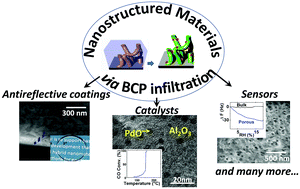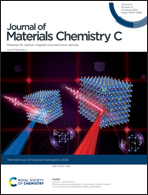Design of functional composite and all-inorganic nanostructured materials via infiltration of polymer templates with inorganic precursors
Abstract
Robust and efficient approaches for the synthesis of materials with structure, porosity, and composition controlled at the nanoscale are highly important for a wide range of applications. Polymer templates are promising platforms to achieve such control. The self-assembly process of polymers provides access to diverse structures that can serve as templates for the deposition of inorganic materials. By infiltrating metal precursors from gas or liquid phases, using sequential infiltration synthesis (SIS) or swelling-based infiltration (SBI), respectively, into the polymer templates, one can create finely-tuned texturing of the surface films and bulk materials. In this review, we outline the specifics and dynamics of the polymer infiltration process and characterize the structure and properties of the synthesized materials. Finally, we highlight recent progress in implementing polymer infiltration-based nanoporous ceramics for many applications, including sensors, antireflective coatings, oil-absorbing foams, nanolithographic patterns, and catalytic materials.

- This article is part of the themed collection: Journal of Materials Chemistry C Emerging Investigators


 Please wait while we load your content...
Please wait while we load your content...
